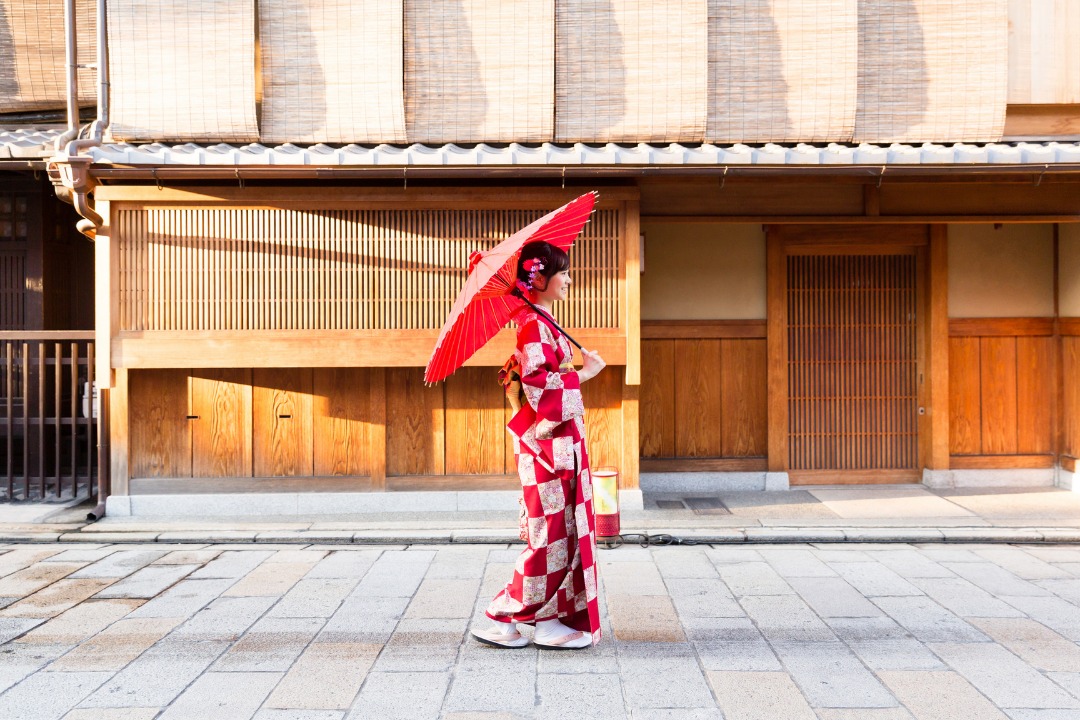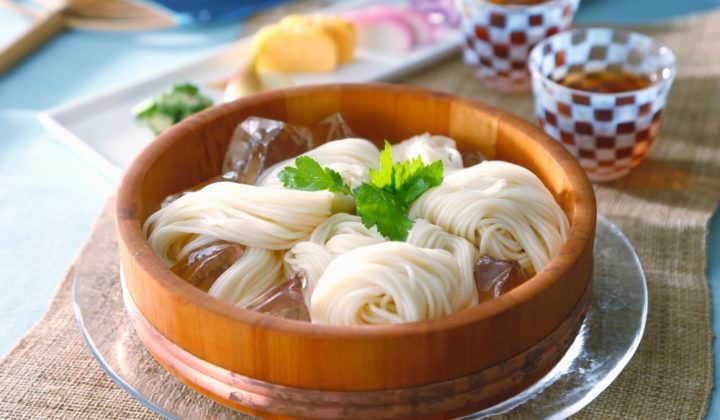This post is also available in:

Interested in trying some Japanese traditions during your time living in Japan? It takes a long time to master all the Japanese traditions, but it’s not difficult to start learning them. Every part of Japanese culture has a long history behind it, so you can learn more about Japanese history by learning about the culture.
Our Top 5 Favourite Japanese Traditions to Experience
Here are some Japanese traditions you can start learning easily through either regular or one-off lessons.
1. Japanese Tea Ceremony

Credit: Canva.com
The Japanese tea ceremony is called “Sado” or “Chanoyu” which has a history lasting more than 1000 years. The elegance of the Japanese tea ceremony is not only from the taste of the Matcha, but also from the architecture of the tea room, the house with a luxurious Japanese garden. Typically Japanese tea ceremonies are carried out with either Matcha (powder made from gyokuro green tea) or sencha green tea (tea leaf).
There are two styles of Japanese tea ceremony. One is called Omote senke, and the other is called Ura senke. There are some differences in the manners of the two styles, but the most significant difference is how to hold the teacup (chawan in Japanese) and how to drink the tea
A soft & sweet Japanese cake, which is called wagashi, will be served with tea at Japanese tea ceremonies. The sweets are chosen depending on the season or the preference of the host.
Japanese tea ceremony used to be one of the bridal training practices taught to young women, who had to learn it before getting married.

Credits: Canva.com
2. Japanese Martial Arts
If you prefer to try some traditions that make use of your body, why not try some Japanese martial arts!
Judo

Credits: Canva.com
Judo is a Japanese martial art, recognised as an official Olympic sport. Japan has won many gold medals in Judo at the Olympics and is a sport not only for men but also for women. You might have heard about a popular anime called “Yawara” – a story about a girl who started doing Judo.
Judo has strict rules, and it’s easy to get injured if you don’t follow them. And you will need to train hard if you want to reach a high level. For short-term learning it’s still fun to learn many techniques (called “waza” in Japanese). Sure to be an interesting experience!
Kendo

Credits: Canva.com
Kendo (Japanese Traditional Fencing) is a competitive fighting sport, which descended from swordsmanship (kenjutsu) and uses bamboo swords (shinai) and protective armour (bōgu). Today, it is widely practised within Japan and many other nations across the world. There are three strike zones: the head, torso, and forearm (men, do, and kote, respectively, in Japanese). Just like Western fencing, traditional Japanese swordsmanship has become a modern sport.
3. Japanese Calligraphy

Japanese calligraphy, ‘Shodo” or “Shuuji” is famous and popular all over the world. There are a few types of handwriting, and the famous ones are Kaisho (regular script style), and Gyousho (semi-cursive style). If you are a beginner, you usually will start with Kaisho.
The following tools are used when you do Japanese calligraphy.
1) A brush (fude)
2) An ink stick (sumi)
3) Mulberry paper (washi)
4) An inkstone (suzuri)
5) A paperweight (bunchin)
6) A cloth (shitajiki)
If you attend the one-day lesson or workshop, you don’t have to prepare these tools, but if you are planning to participate in the experience regularly, it might be better to prepare them when you start. You can find all of them in the 100 yen shop.

Credits: Canva.com
4. Japanese Flower Arrangement

Credits: Canva.com
Japanese flower arrangement, which is called ikebana or kado in Japanese, is one of the popular and famous Japanese traditional cultures to learn. It dates back to the 7th century and now there are more than 1,000 schools all over the world.
One of the differences from Western-style flower arrangements is that the Japanese school has lots of strict rules about shapes, colour, lines, forms and so on.
The flowers are arranged in a vase, something these vases are flat. When you arrange flowers in a flat vase, you need to pierce them on the “kenzan”, which is a sort of pin holder.
Japanese flower arrangement also used to be one of the bridal training skills that women had to learn before getting married.

Credits: Canva.com
5. Kimono

Kimono, sometimes called wafuku, is a traditional Japanese garment which the Japanese used to wear every day. After the Meiji era, they started to wear western-style clothes. The kimono is only for special occasions nowadays. Therefore most Japanese cannot put on a kimono by themselves and so ask the assistance of someone who knows how to wear it, and learning how to wear kimono is a big lesson to learn, even among Japanese as well.
When you learn how to wear kimono, you do not have to buy your own kimono. Typically you can borrow them from your school or teacher.
Kimono is always wrapped around your body with the left side over the right side if you are a woman and the opposite for men. You use a sash, which is called obi to secure the kimono and wear white socks (tabi).
Your Favourite Japanese Traditions

Credits: Canva.com
Did you find something you would like to try from the list above? What are your favourite Japanese traditions? We would love to know!
If you want to know more about Japanese traditional culture, enjoying Japanese traditional performances such as Kabuki, or Nou will be an unforgettable experience.
More to read:
- What is Onsen? The Ultimate Guide to Japan’s Most Popular Tradition
- A Guide To Japanese Tea Ceremony
- Top 7 Power Spots: Finding Peace in Japan’s Sacred Places
- The History of Bowing and Other Japanese Customs
- 10 Unique Features of Japanese Homes
- Sumimasen: 5 Meanings in the Japanese Language
- Everything You Need To Know About Japanese Mythology
Note: This article was originally published on Jul 10, 2020 and edited and republished on Sep 7, 2021.
Find us on Instagram for beautiful scenes of Japan & useful tips about Japan life!
View this post on Instagram






